Top 10 films of 2021 – A personal selection
It’s about time we had a top 10 featuring some of the unusual suspects, thus defying the bombastic lists that would include Titane or Annette with closed eyes. Year after year, I notice there are fewer and fewer things that still have an effect on me when it’s time to sum it up, so I’m glad these 10 films found me. (The only reason this list is missing Apichatpong Weerasethakul, Nadav Lapid and Ryusuke Hamaguchi is because their films haven’t made it to yours truly yet; I’ll catch up next year, it’s a promise).
-
Shiva Baby (dir. Emma Seligman)
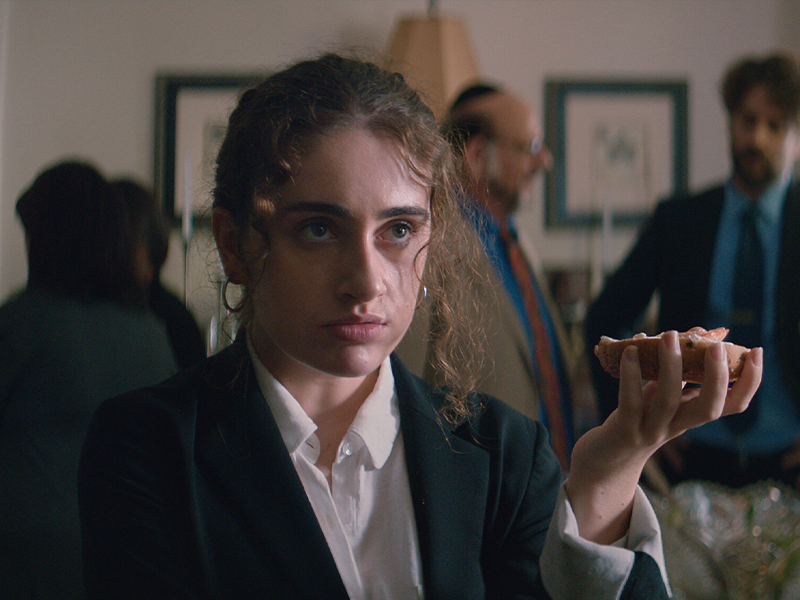
At a family funeral service, where she is dragged by her parents, to her own horror, Danielle (Rachel Sennott) runs into an ex-girlfriend and her current sugar daddy – the whole social narrative that she had built so neatly breaks down to pieces, her worlds collide. This short, claustrophobic, apartment satire of morals, featuring an obsessive-compulsive eating behavior, reminds of the delirium in Mother! (dir. Darren Aronofsky, 2017) – Danielle, sometimes horrified, sometimes bored, sweats anxiously, gobbles muffins and eavesdrops behind corners, gets on her knees, cuts her leg stepping on a nail, has a breakdown in front of her entire family. Seligman’s horror-comedy hybrid works perfectly, without ever transgressing the realism of the story: the protagonist’s misanthropy is her shield against the pampering or gossip of her relatives present at the funeral, for which she will never be enough.
-
Preparations to Be Together for an Unknown Period of Time (dir. Lili Horvát)
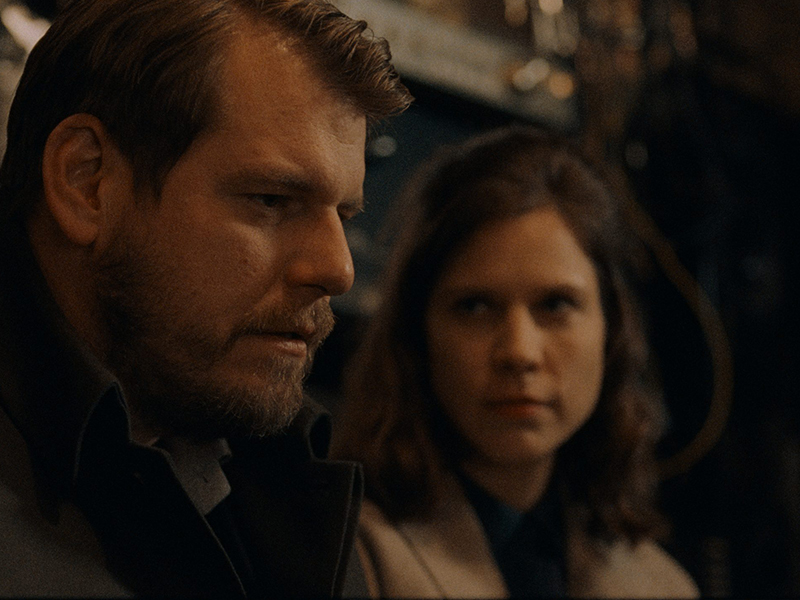
One of the films I saw last year, but which reached Romanian screens only recently is Preparations to Be Together for an Unknown Period of Time (I also wrote about it here), a great Hungarian romance about the cat and mouse game between two surgeons looking for each other without the other knowing it; so, along with the protagonist, you move from one turn of events to another (is it all a fabrication, is it all just in her head?). The film ticks all the romantic-touristy leitmotifs, from the bridge where they met, which she gazes upon every day, to fainting out of love, but without hitting it too hard; Horvát’s successful dosage in a genre so squishy such as romance simply melted me.
-
Benedetta (dir. Paul Verhoeven)
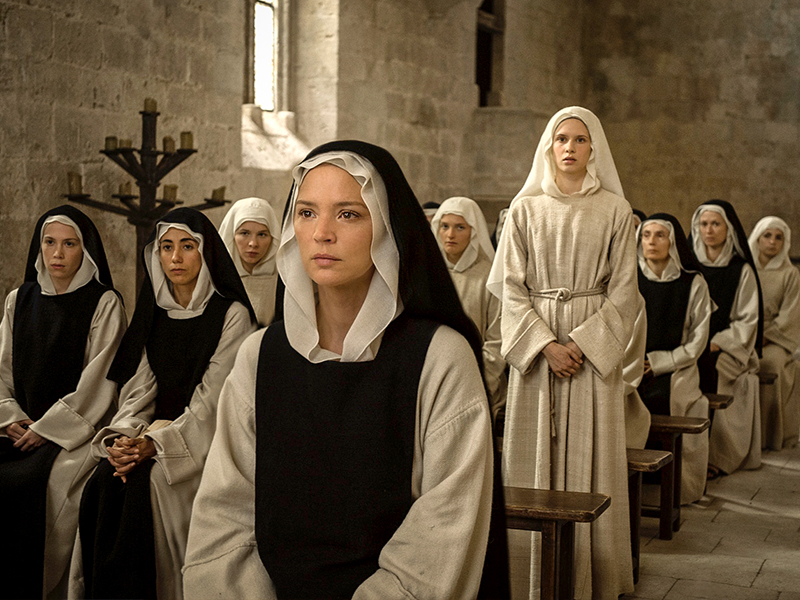
I could have guessed right away that Benedetta is a Verhoeven film; it’s deviant, blasphemous, concupiscent, involves two horny nuns, stigmata, visions of Christ, a Charlotte Rampling playing a spy, nuns watching through peepholes. Shall I say that the bubonic plague breaks out, or that at some point a comet falls and the sky turns red? I don’t know exactly what made me fall in love with this film, maybe the lightness with which it emits so much blasphemy per second, still leaving, in the end, the feeling that I witnessed something pure and sensual? Like the protagonist you can’t tell exactly if she’s holy or pretending, I still don’t know how I should have perceived this film, which hints at Scorsese’s 1988 The Last Temptation of Christ, as well as The Devils, Ken Russell’s 1971 classic.
-
The Portuguese Woman (dir. Rita Azevedo Gomes)
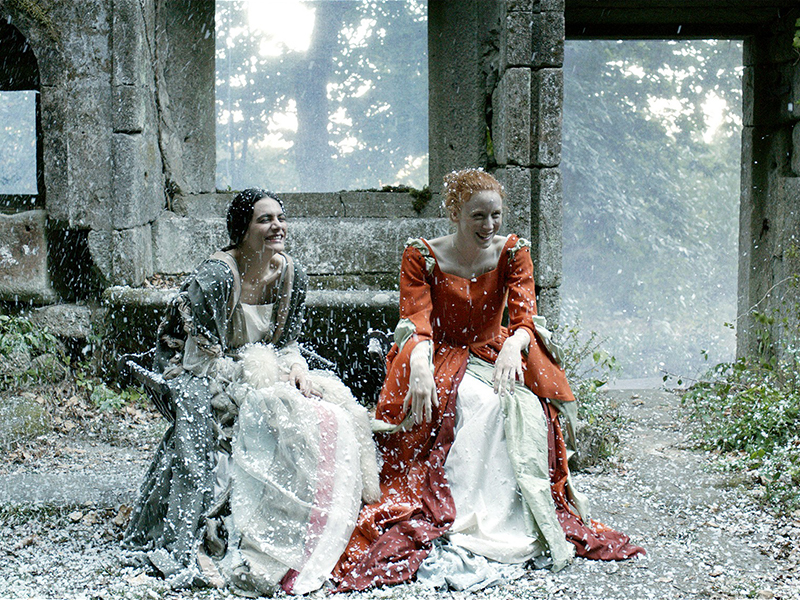
Halfway through this pre-Raphaelite period film, the snow starts to fall in large flakes over the protagonist; her joy is so great, she has never seen snow. She is a foreigner on these lands, a Portuguese woman who becomes the subject of many legends (they say she is either a witch or an adulteress). The story is lax, it can be summarized in a few words: her husband, the noble Von Ketten, leaves her in an abandoned Italian mansion, with her baby and a mountain of servants, to join the war. The Portuguese woman has no problem adapting, although she is stubborn in her quest to seclude herself from civilization indefinitely – she molds clay, adopts a wolf, sings with her servants, falls asleep on the cold furs that serve as carpets. For 11 years, she has done nothing but wait. The marvel of this film derives from its pictoriality, from the obsession with meticulously constructed static framing. Last but not least, from the artifice of certain details that break the monotony at times, such as the off-tune songs of a woman from another time, who weeps by the walls of the fortress, surrounded by dogs.
-
Petite Maman (dir. Céline Sciamma)
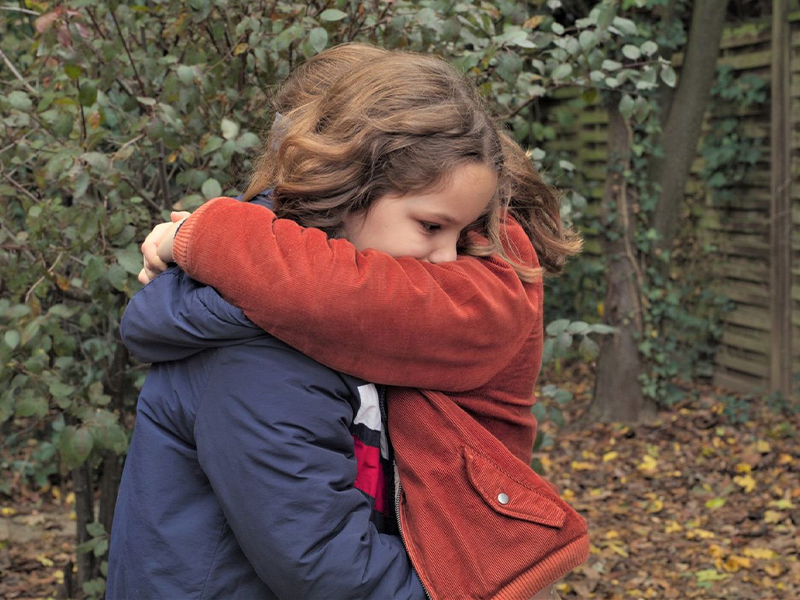
The premise of the film is fantastic: a little girl and her mother meet in the forest, where they make tree houses, they talk about all sorts of things, they hug, they eat together. The twist is that they are both the same age, and the first one seems to have gone back in time, at a turning point in her mother’s life, while in the present the little girl is also going through a drama, her grandmother’s death. It feels like a postponement of the passage of time, a postponement of parting with her mother and grandmother (among other things, in this warm fantasy, the little girl meets her grandmother in her youth and gets to talk to her once again). In my opinion, Petite Maman is Céline Sciamma’s greatest film to date.
-
What Do We See When We Look at the Sky (dir. Alexandre Koberidze)
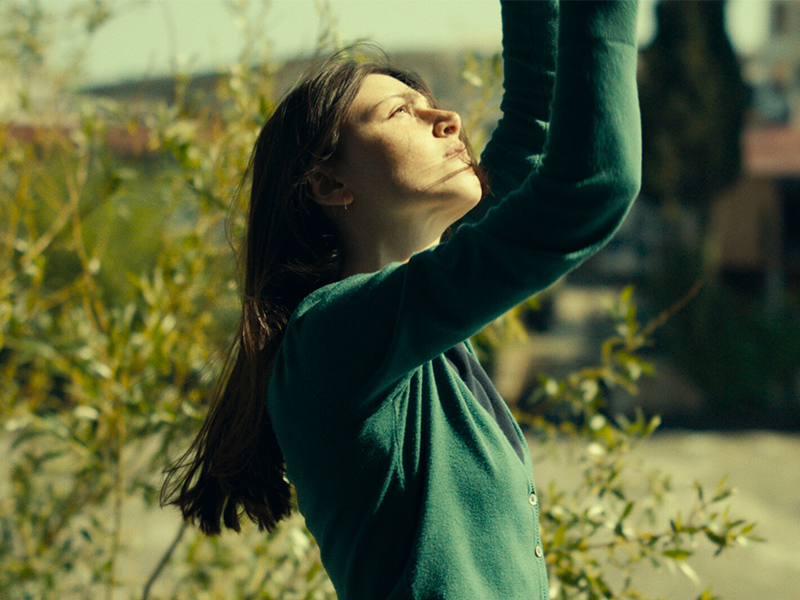
A boy and a girl meet on the street, they decide to see each other again the next day and a curse falls on them; they will never recognize one another because their appearance changes completely overnight. They work in adjacent places, where they glance at each other, they fancy each other, but none of them thinks of confessing what has happened to them. This contemporary fairy tale that simply invites you to contemplate the beauty of the city and its inhabitants, each with its own habits, with an extra narrative that shows how the news circulates among quadrupeds, is probably the most beautiful poem of the year. It is not only Koberidze’s eye for things that generally escape one’s sight, but also the slow montage and the abundance of docu-fictional gestures that populate the screen – a ball carried by the swirling riverbed.
-
Hygiène Sociale (dir. Denis Côté)
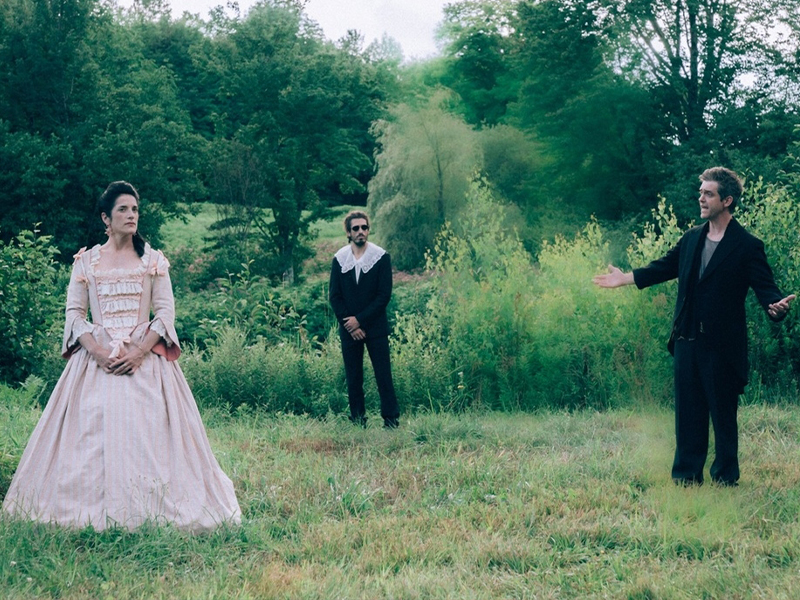
Hygiène Sociale is remarkable from two points of view: first, it’s the improbable combination between the satire of social distancing and toy theater (it could be seen as a parody of Straub-Huillet films), and second, the weird, inexplicable, capricious and delicious anachronism of the film. Let’s take it step by step: here, the protagonist, Antonin, a contemporary dandy in Victorian clothes, is confronted in five tableaux by five different women (his sister, his mistress, his wife, a tax inspector, his theft victim). They are all static, rigid in their poses, keeping at least 1.5 meters of space between them, as they are framed, of course, from a distance. The discourse consists of vulgar expressions embellished to the brim and gratuitous euphemisms (here is the most precious way one might use to say that he is a petty thief living in his friend’s piece of junk Volkswagen). It may seem that none of this makes sense, that we are witnessing an authorial farce. It is quite possible, although there are some conclusions that can be drawn even from here (that Antonin finds himself in a crisis of masculinity, for example; that the mess which he got pulled into is Kafkaesque, that the universe is against him). In any case, Hygiène Sociale is not to be missed because it best sums up the zeitgeist we have been bathing in for some time now.
-
Pig (dir. Michael Sarnoski)
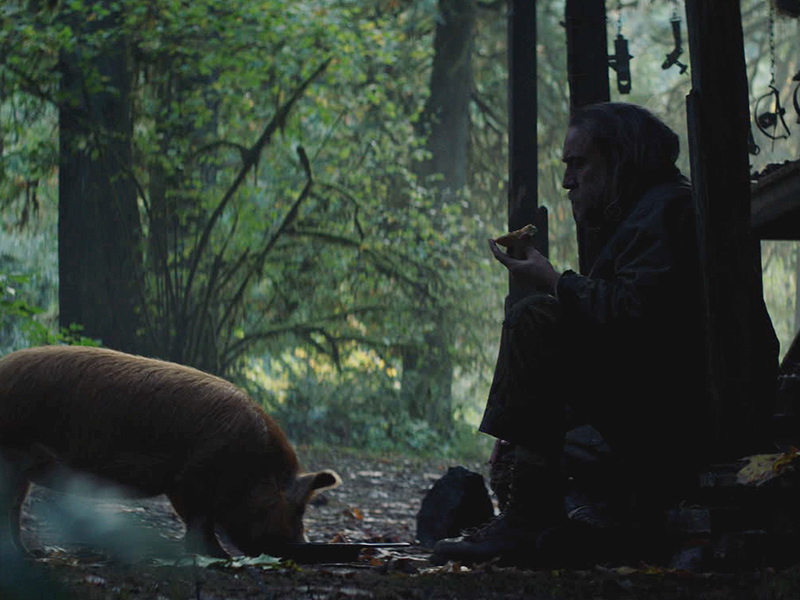
I must admit, reading about Nicolas Cage and whatever demented role he is going to play next or whatever kamikaze production he is going to join (for example, the one who sets fire to the Universe dressed in latex, the apocalyptic motorcyclist, the oppressed hungover, the bees’ fighter – the list is endless) doesn’t impress me anymore. But with Pig, I think he has reached the peak in Bressonian acting – he is disguised as a reclusive truffle forager who lives in a forest, only him and his pig. He is ragged, muttering, tender, gnarled, making omelets and sweeping. One night, some unidentified assailants steal his pig and leave him to bleed. What does he do? He stays like that, with his wounds in sight, bleeding, and he combs the entire city looking for his pet (that obviously sounds like Nicolas Cage). The film, a total oddity, between overwhelming tenderness and ferocious brutality, has this salad structure – it gradually opens and brings out the character – this shaggy avenger had once been the most appreciated and kind-hearted chef in town.
-
The Green Knight (dir. David Lowery)
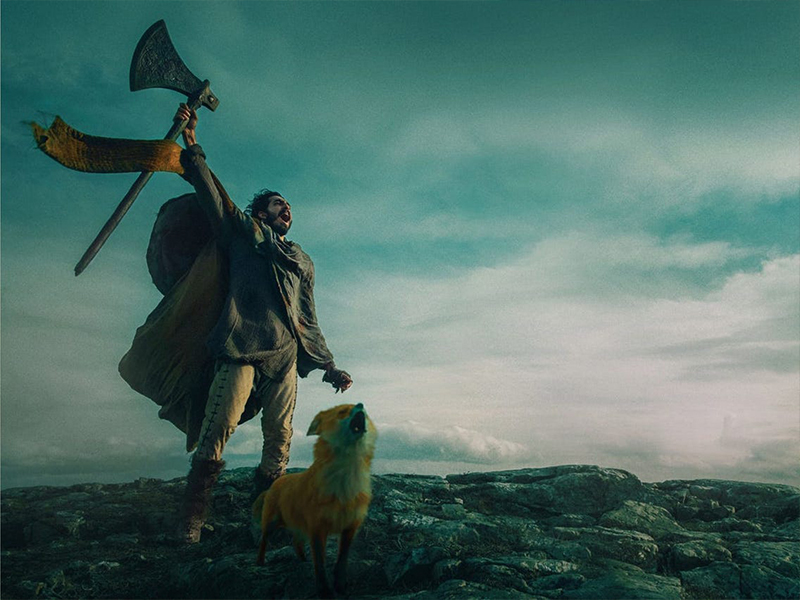
It should be no surprise that I put this movie so high up in the top; I’ve seen it twice and I might give it another view next year. It’s the Arthurian legend but without triumphalism, without heroism or bravery, it’s about the fear of death, minimization, emasculation and mommy issues. Gawain (Dev Patel) enters a Christmas game with a branchy Knight who arrives at the court urging any brave man to cut off his head; and as the challenge goes, the following Christmas, he will wait patiently in his Green Chapel to return the favor. Gawain is victorious and the year is over – after long, fairy-tale-like adventures, such as meeting Gulliverian giants, helping a decapitated young woman to retrieve her head, and all kinds of other mythological detours, he finally reaches the Green Knight, but when to cut off his head, he hesitates, he is not ready yet. Lowery manages to weave a metaphorical version of the world, so fibrous and textured as I haven’t seen in a long time in a genre film (maybe just at Robert Eggers). It would be frivolous to categorize this film as a mere aesthetic pleasure, it’s just an alloy that facilitates meaning.
-
Bergman Island (dir. Mia Hansen-Løve)
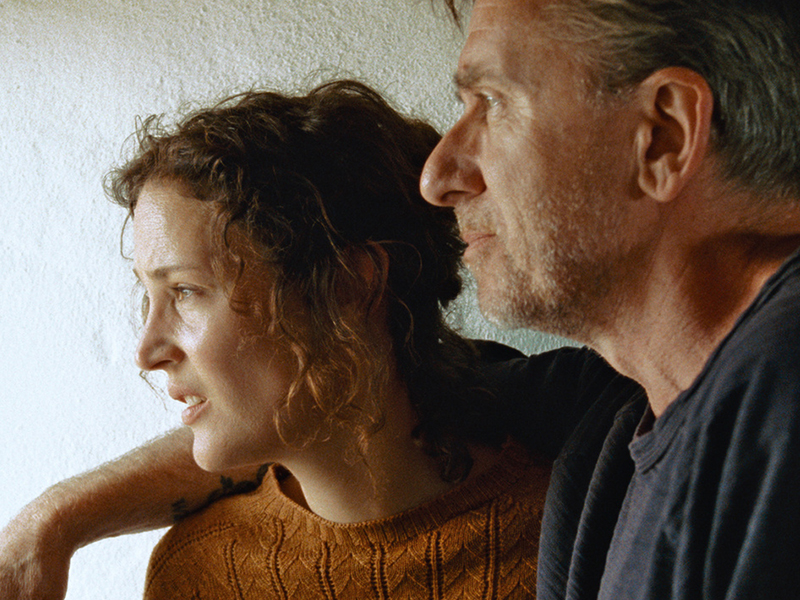
I didn’t lie when I said that this is a personal top – no way would I have left out this meta-exercise about Ingmar Bergman, the island where he created, lived and fought personal demons, and his legacy in contemporary cinema. The meta twists are infinite. On the surface, it is a novel à clef about the relationship between Mia Hansen-Løve and Olivier Assayas, doubled by the protagonists played by Vicky Krieps and Tim Roth, extra doubled by the protagonists of the meta-narrative they create on the island. Last but not least, it’s about the creative block, about the clash between admiration for the mythology created around Bergman and reality (for example, few address the fact that Bergman was a misogynistic tyrant without whom his films would not have been cruel). Once again, it would be easy to fall into the trap of this slow-burning film’s simplicity; it requires time and patience from the viewer.
Journalist and film critic, with a master's degree in film critics. Collaborates with Scena9, Acoperișul de Sticlă, FILM and FILM Menu magazines. For Films in Frame, she brings the monthly top of films and writes the monthly editorial Panorama, published on a Thursday. In her spare time, she retires in the woods where she pictures other possible lives and flying foxes.


